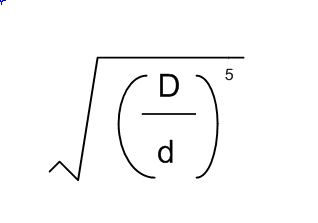An important plumbing concept is understanding the ratio between pipe size and volume output. A common question that can be found on plumbing exams is: “How many one inch pipes would it take to provide the same volume of water as a two inch pipe?”. Although this seems like a simple question the answer is actually four.
A simple formula is all that’s required to find the capacity of larger pipes in relation to smaller ones but this will not take into account the friction loss and assumes the same pressure.
Simple pipe size ratio
- D2 – diameter of larger pipe squared
- d2 – diameter of smaller pipe squared
- N – number of smaller pipes
N = D2 / d2
Example: How many 1-1/2″ pipes would be required to provide the volume of one 3″ pipe?
(3×3) / (1.5×1.5) = Four 1-1/2″ pipes are needed
The above formula does not account for friction loss however as smaller pipes have more surface in contact with the water flowing through them. To more accurately find the ratio including friction loss use this formula:

Example: How many 2″ pipes would be required to provide the volume of one 3″ pipe?
- 3 / 2 = 1.5
- 1.5 x 1.5 x 1.5 x 1.5 x 1.5 = 7.59375
- square root of 7.59375 = 2.756 2″ pipes are needed

